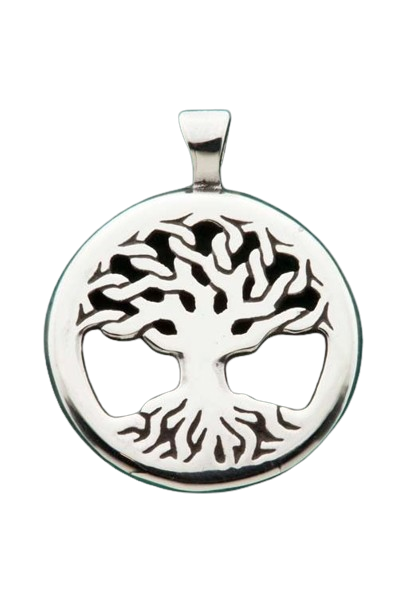Inspired by Celtic Myth & Legend
Sean Berton was born in Northern California and raised there and further north in Washington State. After High School he embarked on 4 years of high seas adventure as a commercial fisherman and became familiar with traditional scrimshaw art. Working with fossilized ivory from Mammoth and Mastodon ivory, Sean began honing his skills by creating jewelry with engraved scenes on the polished, fossilized ivory.
Sean then returned to Western Washington University to study architecture, mechanical drawing and fine wood working. This latter skill led to the creation of fine art jewelry combining exotic woods and fossilized ivory, aptly named “Ebony & Ivory”, which he exhibited around the country.
Following a life-changing trip to Ireland and an inspiring visit to Trinity College in Dublin to view The Book of Kells, his fate was sealed; and when he returned to the U.S and settled in Boulder Colorado, Sean embarked on a career creating Celtic cultural symbols in silver and gold. Sean and his family subsequently moved to California in search of a larger festival audience and a longer show season.
“I could not be more pleased to be able to create art and ideas based on the mystical paths and inspiration of the Celtic tribal people and beyond. The images and symbols still seem endless to me in their power of connection to life's intricacies, beauty, and universal truths.”
Celtic Art & Heritage
Celtic art, with its intricate designs and symbolic motifs, provides a vivid window into the culture and values of the ancient Celtic people. Spanning from the early Iron Age through the Medieval period, Celtic art evolved through various stages, influenced by both internal innovation and external interactions.
Early Celtic Art - Hallstatt
The earliest phase of Celtic art is associated with the Hallstatt culture (c. 800-450 BCE) in Central Europe.
The Hallstatt Celts excelled in crafting objects from bronze and iron, including weapons, jewelry, and ceremonial items.
Ornate designs on these objects often featured spirals, meanders, and cross-hatching, reflecting both aesthetic preferences and symbolic meanings.
Early Celtic Art - La Tène
The La Tène culture (c. 450 BCE-1st century BCE) marked the zenith of Celtic artistic achievement. Named after the archaeological site on Lake Neuchâtel in Switzerland, La Tène art is renowned for its intricate and flowing designs.
This period saw the introduction of more naturalistic representations of animals and human figures, often intertwined with elaborate vegetal motifs.
Common motifs included spirals, triskeles (three-armed spirals), and zoomorphic designs, which held deep symbolic significance in Celtic cosmology.
Early Celtic Art - Roman Influence
The Roman conquest of Celtic territories in the late 1st century BCE brought significant changes to Celtic art. The integration of Celtic lands into the Roman Empire led to a fusion of artistic styles. Roman motifs and techniques influenced local Celtic artisans, resulting in hybrid forms that combined traditional Celtic elements with Roman realism and iconography.
Despite the pervasive Roman influence, Celtic artistic traditions persisted, particularly in regions less affected by Roman rule, such as Ireland and Scotland. The continuation of Celtic art in these areas laid the foundation for its resurgence in the early medieval period.
Early Medieval Celtic Art - Insular Style
The early medieval period witnessed a remarkable revival and transformation of Celtic art, particularly in the British Isles. This era, known as the Insular period, saw the development of a distinctive style that blended native Celtic traditions with Christian themes and influences from Anglo-Saxon and Viking cultures.
Illuminated manuscripts, such as the Book of Kells and the Lindisfarne Gospels, represent the pinnacle of Insular art. These manuscripts are renowned for their intricate interlace patterns, ornate initials, and vibrant use of color. The motifs used in these works, including knotwork, spirals, and zoomorphic designs, are direct descendants of earlier Celtic artistic traditions.
The history of Celtic art is a testament to the creativity and ingenuity of the Celtic people. From the geometric patterns of the Hallstatt period to the elaborate interlace of the Insular style, Celtic art has left an enduring legacy. Its motifs and techniques, steeped in symbolism and tradition, continue to captivate, and inspire, reflecting the timeless beauty and complexity of Celtic culture.
Festivals, Fairs & Art Shows
Sean travels the country to bring the joy and beauty of his Celtic creations to all his friends and customers, old and new.
Be sure to look for him when he visits a festival or art show near you.
To see his current Show Schedule click the button below.
Shop our Celtic Collections
Connect with your Celtic heritage by wearing or gifting one of Sean’s beautiful designs in precious metals - sterling silver or gold.
Newsletter
Be the first to know about our new collection
launches, special offers & other updates.










